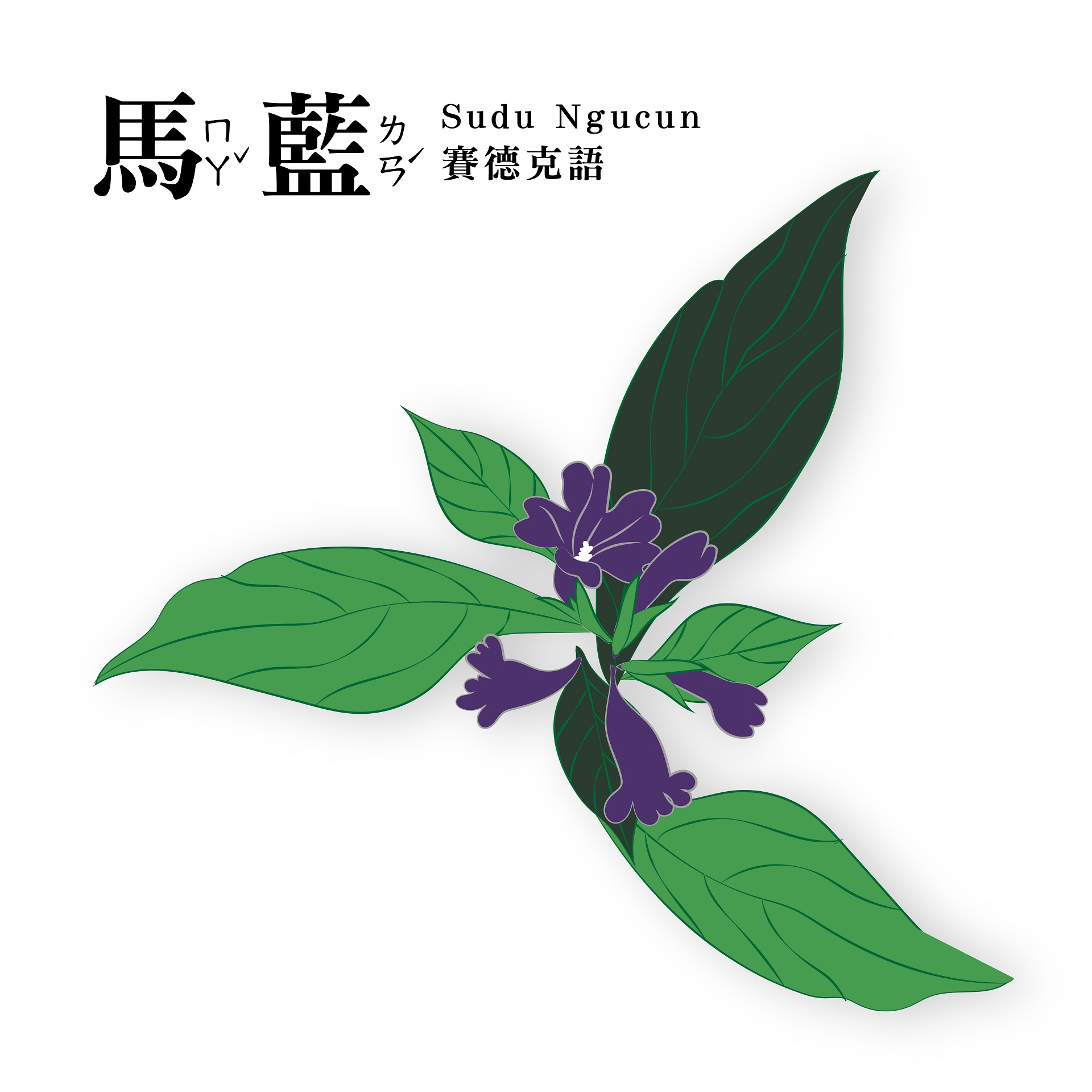date of issue:2021-06-16

馬藍 Sudu Ngucun(賽德克語)
馬藍為多年生草本亞灌木植物,生長在低海拔背陽的山谷坡地上,葉子是對生的十字葉,大約每年的十二月為開發期,淡紫色的小花在山谷間此起彼落地綻放,頗為壯觀
馬藍又稱山藍或大菁,是臺灣重要的藍染植物原料之一,它的莖葉以沈澱法加工可製作成藍泥,色彩呈現青藍靛色的色階,如同藍天的廣闊、大海的深邃。藍衫是早期臺灣各族群民間服飾的主要色彩,不管是原住民族、閩南族群或是客家族群都可以看見這美麗的藍靛色,藍染布面上具有特殊氣味,且能驅蟲、防蚊的功能
昔日邵族族人利用馬藍葉子的汁液作織品藍色染劑以及乾燥的根葉入藥,頗具藥效。馬藍的根、莖、葉可是很好的中藥材,具有清熱解毒之效,因此馬藍整株能被澈底運用,發展潛力其實相當深厚
Sudu Ngucun (the Kari Seediq word for Strobilanthes cusia, also known as malan in Chinese)
Malan is a perennial herbaceous shrub that grows in low-altitude valleys, typically on hills facing away from the sun. It is an opposite-leaved cruciferous plant, in Taiwan blooming around December and blanketing the valleys with a magnificent scene of beautiful light-purple flowers.
Malan is an important ingredient for plant-based dye in Taiwan. Leaves can be processed into a light indigo paste, by way of sedimentation. The color evokes the broad blue sky and the deep blue sea. This malan-based indigo dye is has a long history of use in the traditional blue shirts and other clothing of Taiwan’s aboriginal groups, and later also flourished in Minnan and Hakka cultures. In addition to its beauty, fabric colored with malan dye also repels mosquitos and other insects.
In aboriginal Thao culture, all parts of the malan plant were used. Leaves were processed to produce a liquid coloring agent, adding beauty and providing protection from insects. Roots, stems, and leaves of the plant, found to have mild detoxifying properties, were dried and used in medicine. Malan has great potential a revival in modern times.
